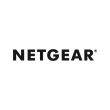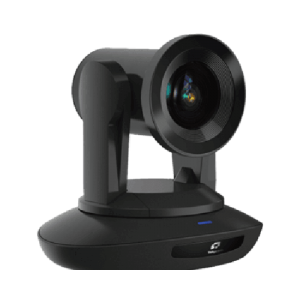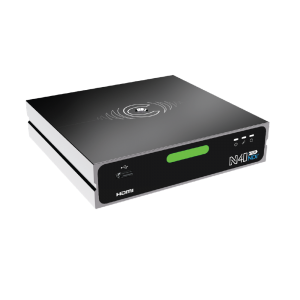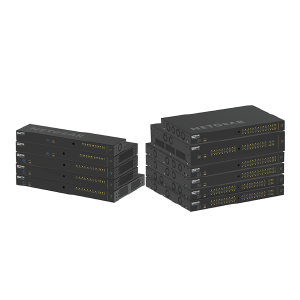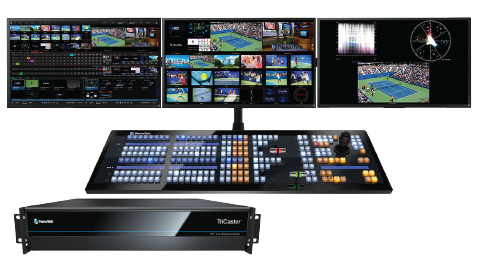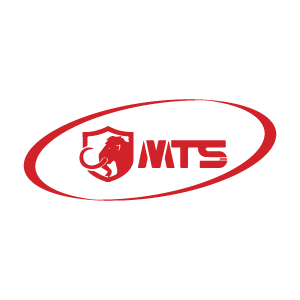
Best Practices for Audiovisual (AV) over IP Productions:
Investigate the Most Recent Trends, Technologies, and Best Practices for Audiovisual (AV) over IP Productions.
Introductions
Audiovisual (AV) over IP productions have grown in popularity in recent years, allowing businesses to send high-quality audio and video signals over IP networks such as local area networks (LANs) or wide area networks (WANs). (WANs). AV over IP productions provide flexibility, scalability, and cost-effectiveness, making them an appealing solution for a wide range of applications such as live events, broadcasting, corporate communications, education, and more.
To ensure best performance and dependability, AV over IP productions require rigorous design, implementation, and administration. In this post, we will look at the most recent trends, technologies, and best practices for AV over IP productions, including network architecture, hardware and software concerns, and AV over IP practices.
Network Design
The IP network design is important to the success of AV over IP productions. Consider the following best practises:
- Network Capacity: To send high-quality audio and video signals, AV over IP productions demand a large amount of bandwidth. As a result, it is critical to examine the network’s capacity and guarantee that it can manage the expected data flow. When evaluating the required bandwidth, consider factors such as the number of sources, destinations, and the resolution of the video signals.
- Network Topology: The physical layout and configuration of switches, routers, and other network components can have an impact on the performance of AV over IP productions. For AV over IP, it is advised to use a dedicated VLAN (Virtual Local Area Network).
- Network Topology: The physical layout and configuration of switches, routers, and other network components can have an impact on the performance of AV over IP productions. It is advised to segregate AV over IP traffic from other data traffic and prioritise it for best performance by using a dedicated VLAN (Virtual Local Area Network).
- Network Redundancy: Network redundancy is critical for ensuring high availability and dependability of AV over IP productions. To avoid single points of failure, this comprises redundant switches, routers, and power supply, as well as redundant network links. Link aggregation (e.g., EtherChannel or LACP) and network protocols such as Rapid Spanning Tree Protocol (RSTP) or Multiple Spanning Tree Protocol (MSTP) can be used to achieve redundancy. (MSTP).
- Quality of Service (QoS): By implementing QoS on the network, AV over IP traffic can be prioritised and given more priority than other data traffic. QoS parameters can be configured based on the AV over IP system’s specific requirements, such as latency, jitter, and packet loss.
Hardware
The proper hardware is essential for the success of AV over IP projects. Consider the following best practises:
Cameras
PTZ cameras are essential in AV over IP productions because they provide versatile and remote-controlled camera motions for capturing high-quality video in a variety of applications such as live events, conferences, lectures, worship services, and more. Here are some significant characteristics of PTZ cameras’ role in AV over IP productions:
- Remote Camera Control
- IP Connectivity
- Video Quality:
- Versatility and Flexibility
- Integration with AV over IP Systems
- Cost-effectiveness
Encoders/Decoders
AV encoders and decoders are key components of AV over IP productions. At the source, they encode the audio and video signals into IP packets, which they decode at the destination. It is critical to consider resolution, frame rate, compression format, latency, and compatibility with other AV equipment when selecting AV encoders and decoders.Here are the key roles of an encoder in AV over IP productions:
- Signal Encoding
- Compression and Bandwidth Management
- Network Protocol Support
- Control and Management
- Integration with AV over IP Systems
- Scalability and Flexibility:
Network Switches
Network switches are essential in AV over IP productions because they permit the transmission of IP packets between the AV encoders and decoders. To provide optimal performance and manageability, managed switches must have capabilities such as VLAN support, QoS, and multicast routing.
- Signal Routing
- Quality of Service (QoS) Management
- Bandwidth Management
- Multicast Support
- Redundancy and Resilience
- Network Security
System Configurations
Software issues are important in AV over IP productions because they provide smooth signal delivery, management, and control. Some significant software considerations for AV over IP productions are as follows:
- AV over IP Software Solutions: AV over IP productions necessitate specialised software solutions for audio and video signal encoding, decoding, routing, and management across an IP network. Encoder/decoder software, control software, and management software are examples of software solutions. Encoders convert analogue or digital AV signals into IP packets for display or recording, while decoders turn IP packets back into audio and video signals for display or recording. Operators can configure and operate AV over IP equipment such as encoders, decoders, and network switches using control software. Monitoring, diagnostics, and troubleshooting capabilities are provided by management software for the AV over IP system.
- Software for Network Configuration: Proper network configuration is critical for AV over IP productions, and software solutions can assist in configuring and administering the IP network. Operators can use network configuration tools to configure VLANs, QoS settings, multicast groups, and other network characteristics to improve the performance and stability of the AV over IP system. It also aids in network traffic monitoring, identifying and fixing network problems, and maintaining efficient signal distribution.
- Video Wall and Multiviewer Software: Multiple video sources are frequently displayed on a video wall or a multiviewer display in AV over IP productions. Operators can configure and control the layout, resolution, and content of video walls and multiviewer displays using video wall and multiviewer software. This programme may include capabilities such as source selection, window sizing and positioning, video scaling, and content management, giving you freedom and control over how your AV content is shown visually.
- Software for Control and Automation: AV over IP productions may involve complicated systems with various sources, displays, and other AV devices that require control and automation. Control and automation software provides operators with a uniform interface for controlling and managing AV equipment such as cameras, microphones, displays, and other AV sources from a single control point. This software may include capabilities such as scheduling, presets, macros, and integration with other control systems, enabling for more efficient and automated AV over IP productions.
- Device management and monitoring software allows operators to monitor the performance, status, and health of AV over IP devices such as encoders, decoders, cameras, and network switches. This programme offers real-time monitoring, diagnostics, and troubleshooting, allowing operators to swiftly discover and rectify issues, optimise performance, and guarantee the AV over IP system runs smoothly.
- Firmware Updates and Maintenance: To ensure optimal performance, stability, and security, AV over IP devices such as encoders, decoders, and network switches may require regular firmware updates and maintenance. Firmware upgrades often include bug fixes, feature enhancements, and security patches, and can be controlled using software tools offered by the AV over IP device vendors. Proper firmware updates and maintenance help to keep the AV over IP system current and reliable.
Trouble Shooting Tips
Despite meticulous planning and execution, problems might develop during AV over IP projects. Consider the following troubleshooting suggestions:
Network Diagnostics: The use of appropriate network diagnostics tools can aid in the identification and resolution of network-related issues. Use network monitoring software or tools that can offer real-time statistics on network metrics such as bandwidth consumption, packet loss, latency, and so on. This can aid in the identification of potential bottlenecks or network congestion that may impair the performance of AV over IP productions.
AV Signal Diagnostics: AV signal diagnostics tools can assist in identifying and resolving problems with AV encoders and decoders. These applications can provide data on signal strength, resolution, frame rate, compression format, and other AV aspects. Use these tools to troubleshoot and diagnose any AV signal difficulties.
Collaboration with Manufacturers/Integrators: If problems persist, it is recommended that you work with the AV over IP system’s manufacturers or integrators. Based on their skill and experience with the specific system, they can provide technical support, direction, and troubleshooting assistance. To accelerate the troubleshooting process, offer precise information about the problem, such as network setups, hardware settings, and software versions.
Conclusion
In terms of flexibility, scalability, and cost-effectiveness, AV over IP productions provide major advantages. To achieve optimal performance and dependability, however, best practises for network architecture, hardware and software considerations, and troubleshooting guidelines must be followed. Properly setting the AV system, updating equipment and software, adopting security measures, and using network and AV signal diagnostics tools can all contribute to seamless and effective AV over IP productions. Organizations may achieve high-quality audio and video transmission by following these best practices, making AV over IP productions a potent solution for a variety of applications in the modern AV sector.
Our Stories
Read more about our stories
Email Us
Drop us an email if you like to know more





